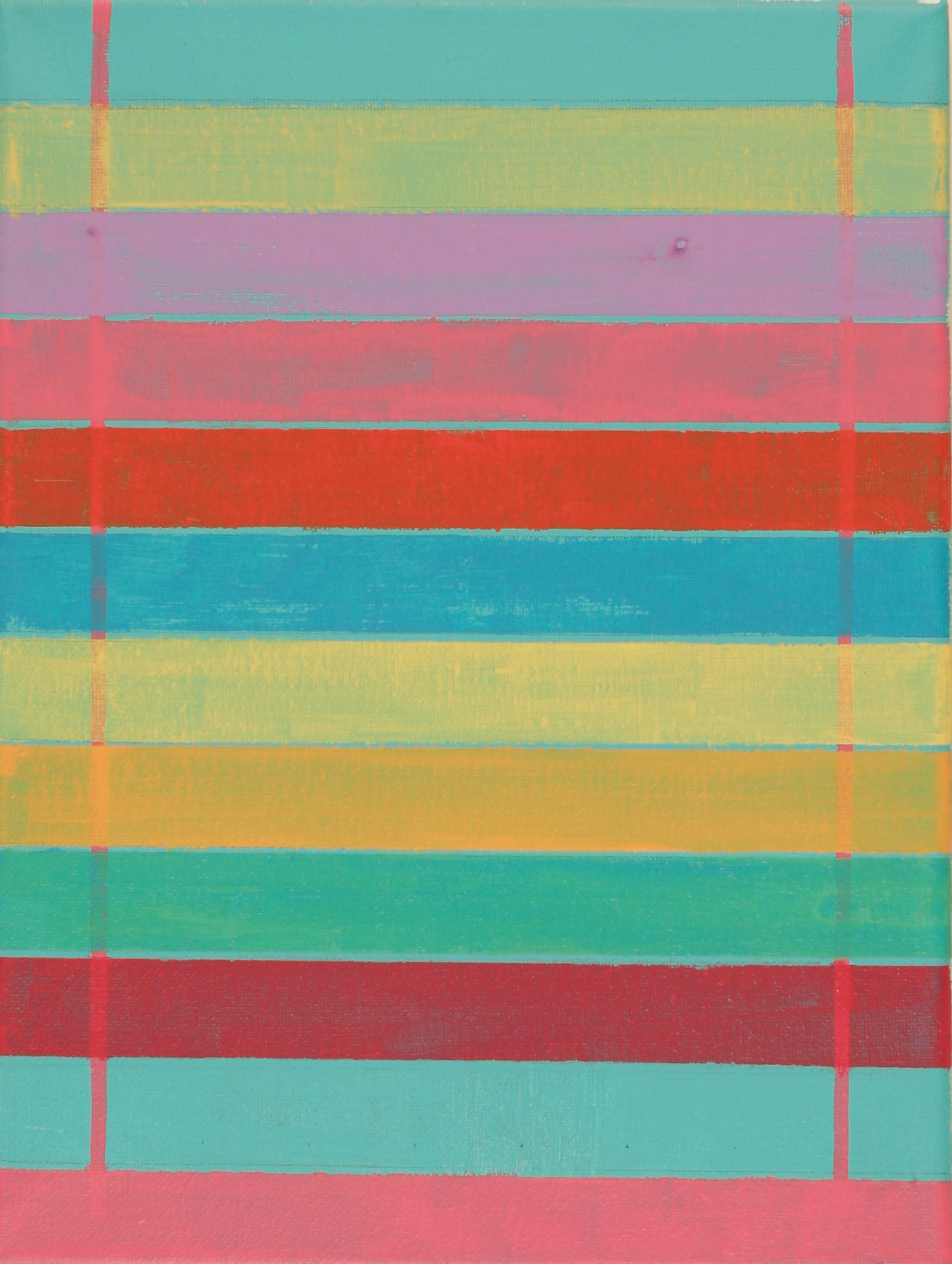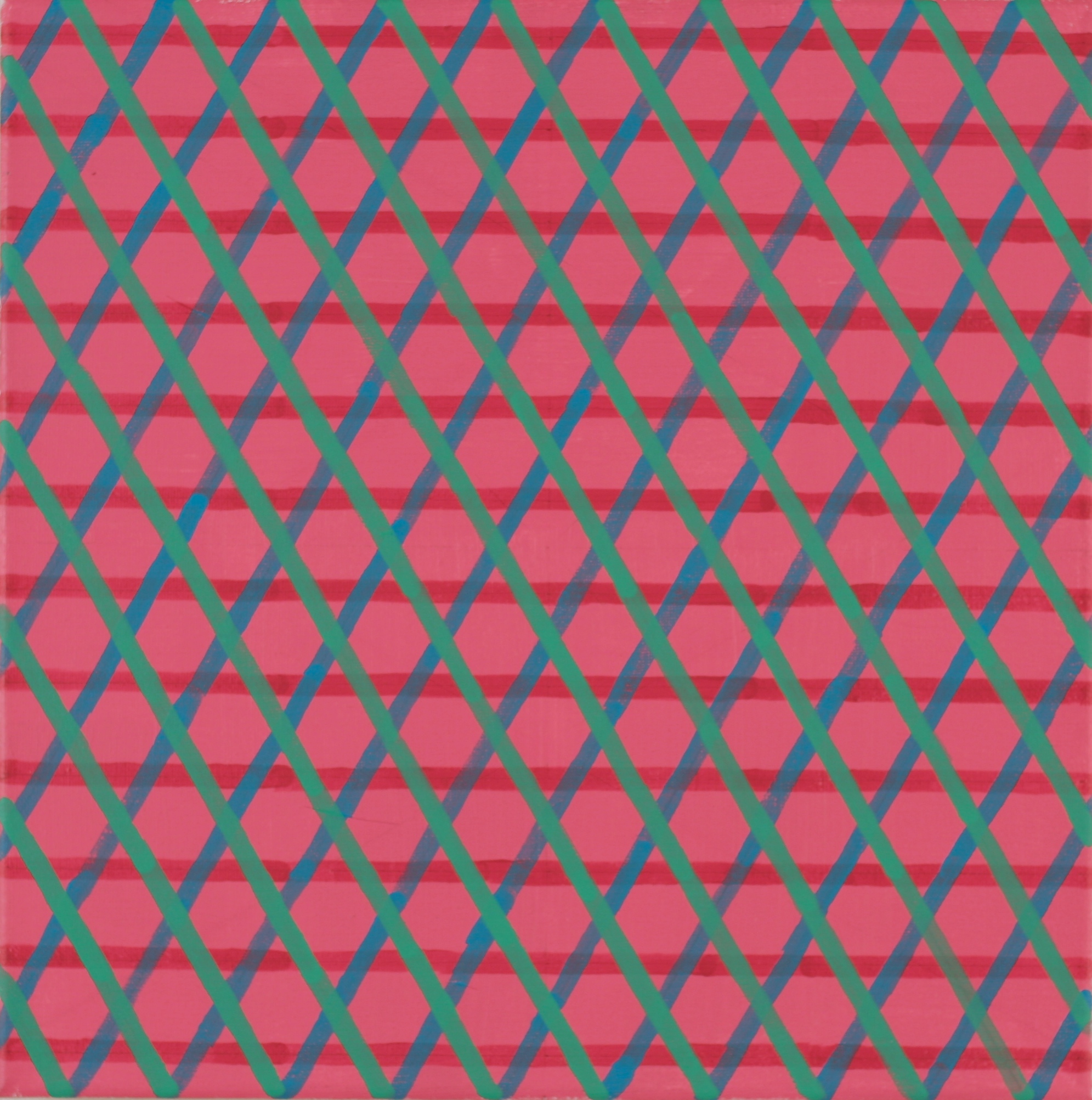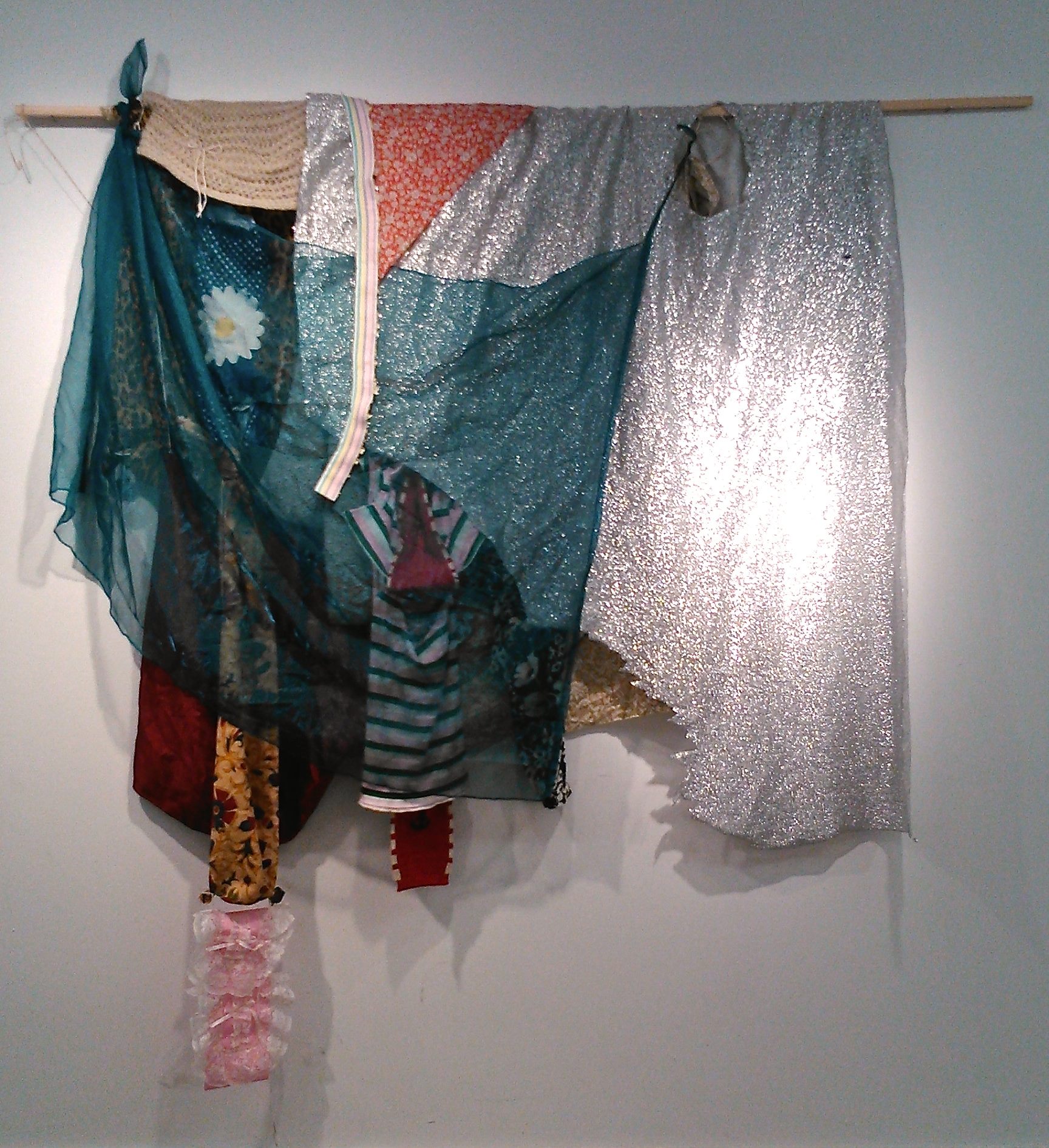About Kazutaka
Baltimore City
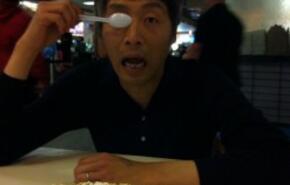
Artist Statement
I am Japanese. I was born in 1976 in Japan. At this time our society, which had been Americanized after WWII had finally become fully industrialized. As a Japanese man living in America, I feel we are losing our sense of tradition now more than ever as a byproduct of time and the forgetting of traditional fables. After I moved to America, I met artists who showed a greater interest in Japanese tradition than many Japanese people living in Japan. By way of my… more
I am Japanese. I was born in 1976 in Japan. At this time our society, which had been Americanized after WWII had finally become fully industrialized. As a Japanese man living in America, I feel we are losing our sense of tradition now more than ever as a byproduct of time and the forgetting of traditional fables. After I moved to America, I met artists who showed a greater interest in Japanese tradition than many Japanese people living in Japan. By way of my… more
Jump to a project:
Color Knitting Project
In October, 2015, I created an system I call Color Knitting. Working with the color knitting system I created has been helping me to understand what it means to be a Japanese person living in this contemporary world. My artwork strives to combine images specific to traditional Japanese culture and references to tropes recognizable to the world effected by consumerism. To make my Color Knitting Paintings, I create patterns with paint by way of cross-hatching color and strips, creating patterns inspired by Japanese fabrics and baskets. For example, my color palette for this series has drawn exclusively from the colors of the toys I bought at Toys r us. However, these colors can be seen universally in all westernized societies.
The compositions for my series of system paintings are developed entirely through Chigirie, a Japanese traditional paper collage method achieved through the tarring and gluing of colored paper to form an arrangements. While the square format of my canvases are derived from the shape of origami paper. Within my paintings, I also maintain hand-painted quality and slight irregularities/fluctuations in line to allow for a sense of what the Japanese call Wabisabi, meaning the beauty of impermanence and the balance of perfection and imperfection.
The compositions for my series of system paintings are developed entirely through Chigirie, a Japanese traditional paper collage method achieved through the tarring and gluing of colored paper to form an arrangements. While the square format of my canvases are derived from the shape of origami paper. Within my paintings, I also maintain hand-painted quality and slight irregularities/fluctuations in line to allow for a sense of what the Japanese call Wabisabi, meaning the beauty of impermanence and the balance of perfection and imperfection.
-
 Color BlindAcrylic on canvas 12”x9” 2015 Painting of a Blind Curtain in Color
Color BlindAcrylic on canvas 12”x9” 2015 Painting of a Blind Curtain in Color -
 Color Farming of Color OysterAcrylic on paper 35"x32" 2015 The combination of 3 shaped canvases (color knitting, color basket, color weaving)
Color Farming of Color OysterAcrylic on paper 35"x32" 2015 The combination of 3 shaped canvases (color knitting, color basket, color weaving) -
 Color Weaving 4Acrylic on canvas 12”x12” 2015 My response to Orphism/Synchronism
Color Weaving 4Acrylic on canvas 12”x12” 2015 My response to Orphism/Synchronism -
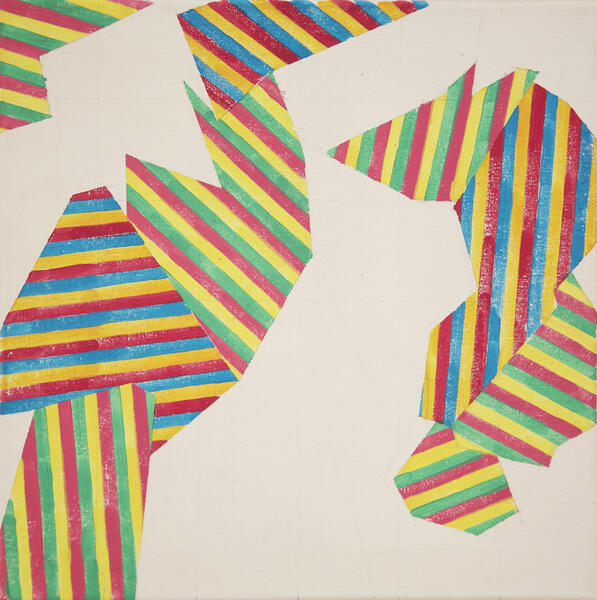 Color Weaving 3Acrylic on canvas 12”x12” 2015 Reference to Origami
Color Weaving 3Acrylic on canvas 12”x12” 2015 Reference to Origami -
 Color Weaving 1Acrylic on canvas 17”x17” 2015 One of the series of Color Weaving project -- juxtaposing color lines.
Color Weaving 1Acrylic on canvas 17”x17” 2015 One of the series of Color Weaving project -- juxtaposing color lines. -
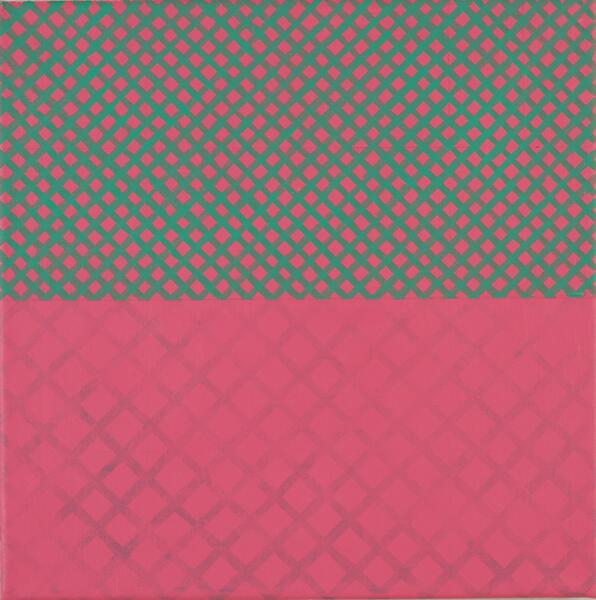 Color Basket 3Acrylic on canvas 12”x12” 2015 Simple but ubiquitous
Color Basket 3Acrylic on canvas 12”x12” 2015 Simple but ubiquitous -
 Color Basket 1Acrylic on Canvas 12”x12” 2015 The pattern of this painting is directly from the pattern of a Japanese traditional basket.
Color Basket 1Acrylic on Canvas 12”x12” 2015 The pattern of this painting is directly from the pattern of a Japanese traditional basket. -
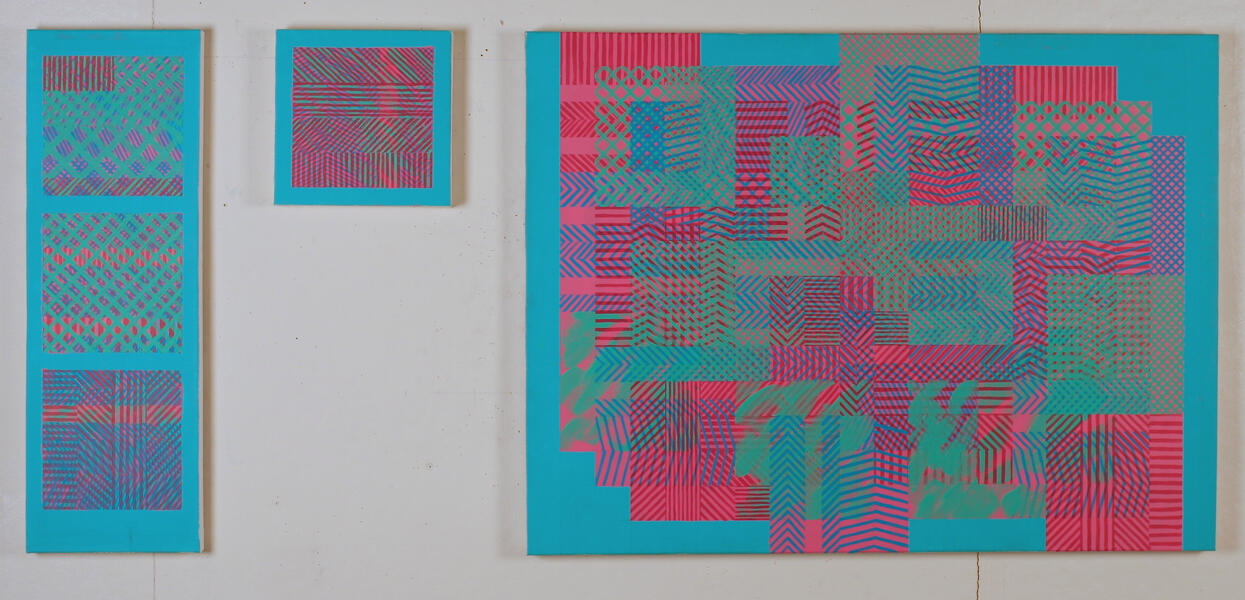 Color Knitting 3Acrylic on canvas 30”x72” (left to right: 10”x30”, 10”x10”, 30”x40”) 2015 Made by the same color pallet as "Color Knitting 1" but I created the 8 patterns for this triptych. There are 16 patterns each of which has 3 layers, and the right one of the triptych has 12 patterns and each of them slides down to right 2 inches by layer.
Color Knitting 3Acrylic on canvas 30”x72” (left to right: 10”x30”, 10”x10”, 30”x40”) 2015 Made by the same color pallet as "Color Knitting 1" but I created the 8 patterns for this triptych. There are 16 patterns each of which has 3 layers, and the right one of the triptych has 12 patterns and each of them slides down to right 2 inches by layer. -
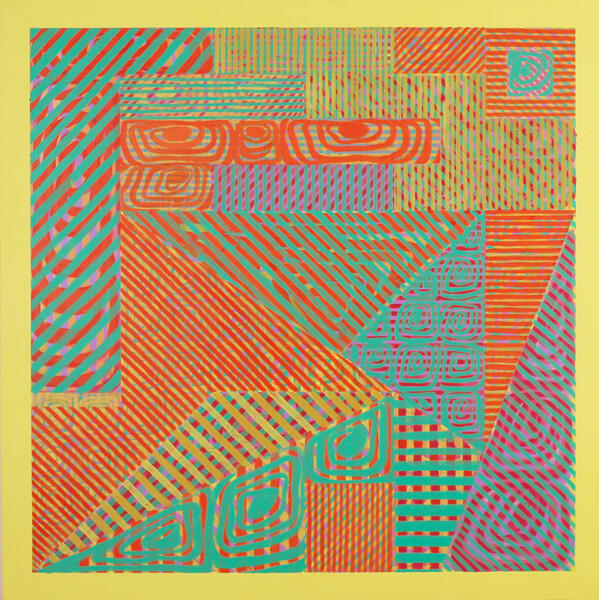 Color Knitting 2Acrylic on canvas 40”x40” 2015 Created by the same system as "Color Knitting 1" but the different color pallet.
Color Knitting 2Acrylic on canvas 40”x40” 2015 Created by the same system as "Color Knitting 1" but the different color pallet. -
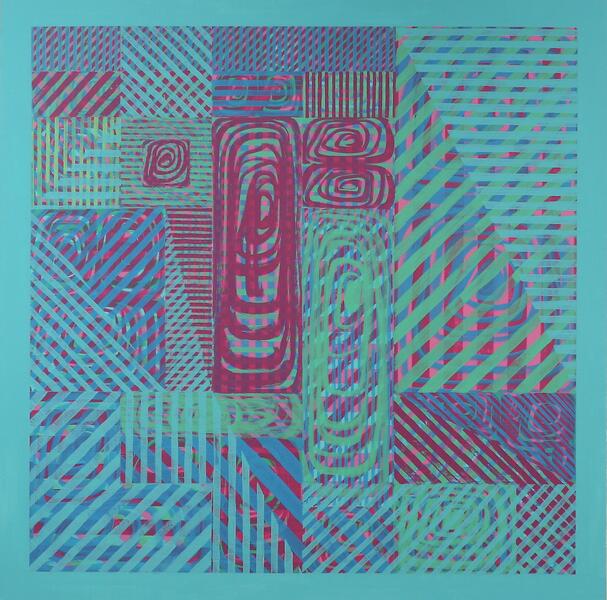 Color Knitting 1Acrylic on canvas 40”x40” 2015 Painting by "Color Knitting System" -- creating the patterns by the layers of the cross-hatching and mark lines -- I established in this October. Color Palette is from the colors of my daughter's necklace. There 18 patterns in the picture frame which share the same pallet and strokes but have the different orders. That creates the variation of the patterns on it.
Color Knitting 1Acrylic on canvas 40”x40” 2015 Painting by "Color Knitting System" -- creating the patterns by the layers of the cross-hatching and mark lines -- I established in this October. Color Palette is from the colors of my daughter's necklace. There 18 patterns in the picture frame which share the same pallet and strokes but have the different orders. That creates the variation of the patterns on it.
Natural History
As an Asian private individual, Kazutaka Hirota is working for the artworks referring to Western history. Becasue he has no responsibility for any issue of Western history, he has the right to cosider the Western dailylife just as he likes. The materials of this project are assembled from the secondhand stores such as Goodwill, or Salvation Army. Having studied art in the US, thus, standing at the neutral point between Asian cultural sensibility and Western art, he manipulates the materials to create artworks just as the issue of form and color on composition. The project is executed by such an Asian private individual, therefore, many of its works seems to reconstruct the fragments and to give them the new aspects or meanings, totally as a result.
-
Just What was That Made Homes in the Pre-Modern Centuries So Different, So Indifferent?This artwork is my response to Richard Hamilton’s collage that has the similar title. Unlike Hamilton’s work, we cannot see any commodity that flourishes the life of the 16th century people (because the setting is far before the Industrial Revolution). The only comfort for their miserable life is hymn the angels play behind them. But, what is that? Can the angels work like rock stars for them?
-
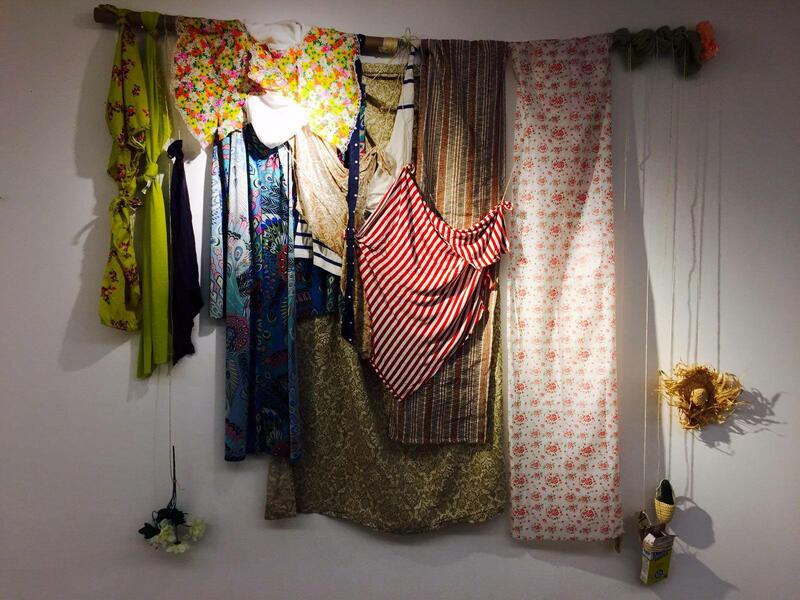 Beggars' DrapesMany of this assemblage’s materials are fabrics I got some donation-based second-hand store in my neighborhood. Even though I use them just as materials of my works, whenever I work with such second-hand fabrics, I feel that each of the fabrics still has the presence of the previous owner and that each fabric must have its own story in some degree even if I cannot exactly realize it. Each of them for me is like the representation of its owner, or even like the person of it. I don’t know who they are, but I feel I have to work with not only the fabrics but also their previous owners since there are their presences on them. I don’t know how these fabrics had come to the store. I don’t know how they had been liked or loved by their previous owners. However, the fact that they were donated means their owners no longer need them in any way, even though I still feel their presences so much. Ken Tisa, my instructor of Personal Narrative mentions so often, “Artist is a magician because artist can change the ordinary into beauty.” I’m not sure if I was able to be a magician for these materials or if they were willing to be spelled someone’s magic, I wanted to give them the new lives in order that they can be seen by someones, means they can be something for someones again.
Beggars' DrapesMany of this assemblage’s materials are fabrics I got some donation-based second-hand store in my neighborhood. Even though I use them just as materials of my works, whenever I work with such second-hand fabrics, I feel that each of the fabrics still has the presence of the previous owner and that each fabric must have its own story in some degree even if I cannot exactly realize it. Each of them for me is like the representation of its owner, or even like the person of it. I don’t know who they are, but I feel I have to work with not only the fabrics but also their previous owners since there are their presences on them. I don’t know how these fabrics had come to the store. I don’t know how they had been liked or loved by their previous owners. However, the fact that they were donated means their owners no longer need them in any way, even though I still feel their presences so much. Ken Tisa, my instructor of Personal Narrative mentions so often, “Artist is a magician because artist can change the ordinary into beauty.” I’m not sure if I was able to be a magician for these materials or if they were willing to be spelled someone’s magic, I wanted to give them the new lives in order that they can be seen by someones, means they can be something for someones again. -
 Brave Mind Creature of the Outer Space
Brave Mind Creature of the Outer Space -
 Aqueous Cleaning
Aqueous Cleaning -
 5358: A Space Crab/ Russian DaughterIf some archeologist or paleobiologist in future excavated the trash or the packages of the daily products in which we are being drown now, s/he would assemble them like this. Human intelligence is really fragile and fallacious like this. Human being should have lived like fungi.
5358: A Space Crab/ Russian DaughterIf some archeologist or paleobiologist in future excavated the trash or the packages of the daily products in which we are being drown now, s/he would assemble them like this. Human intelligence is really fragile and fallacious like this. Human being should have lived like fungi. -
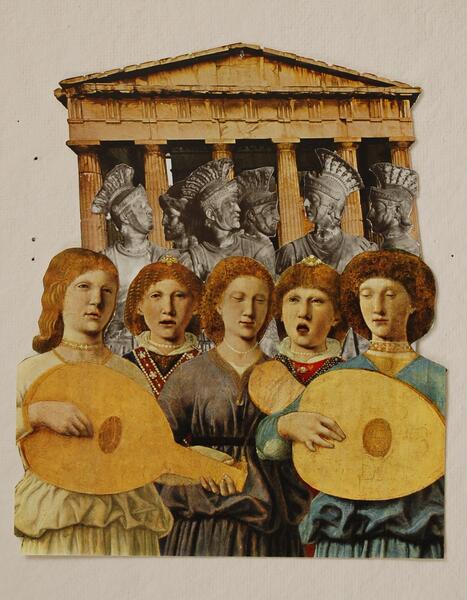 It’s Only Rock N’ RollIn this collage, the troop of historically jumbling Western people act the play of Altamont Free Concert in Altamont, California in 1969. This scene describes the murder in this concert. The five medieval guys or angels act the Rolling Stones (left to right: Mick Taylor, Bill Wyman, Mick Jagger, Charlie Watts, Keith Richards). The Roman soldiers behind the Rolling Stones act Hell’s Angels who worked for the security of this free concert and killed an African American guy. The Parthenon in the background shows us that this play is a tragedy. Of course, they performance “Sympathy for the Devil” in this play.
It’s Only Rock N’ RollIn this collage, the troop of historically jumbling Western people act the play of Altamont Free Concert in Altamont, California in 1969. This scene describes the murder in this concert. The five medieval guys or angels act the Rolling Stones (left to right: Mick Taylor, Bill Wyman, Mick Jagger, Charlie Watts, Keith Richards). The Roman soldiers behind the Rolling Stones act Hell’s Angels who worked for the security of this free concert and killed an African American guy. The Parthenon in the background shows us that this play is a tragedy. Of course, they performance “Sympathy for the Devil” in this play. -
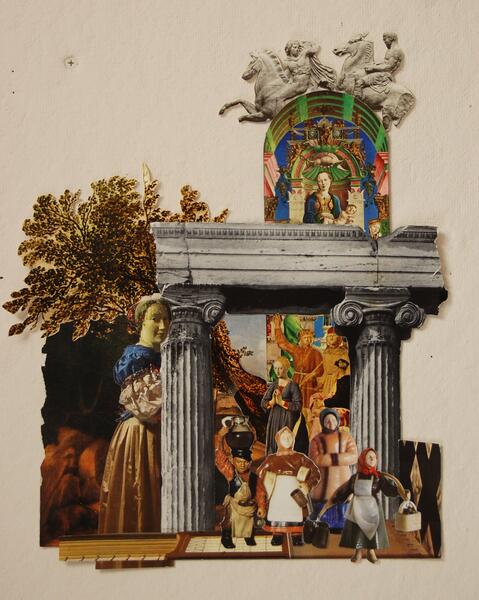 Yah! Yokels!This is the scene excerpt from the (imaginary) Russian film in 1925 called “Yah! Yokels.” The scene describes that a peddler family from a poor peasant village in Georgia, Caucasia have just arrived at the station of Leningrad to start their new life. Later, they will find the greatness of Communist life in Soviet Union.
Yah! Yokels!This is the scene excerpt from the (imaginary) Russian film in 1925 called “Yah! Yokels.” The scene describes that a peddler family from a poor peasant village in Georgia, Caucasia have just arrived at the station of Leningrad to start their new life. Later, they will find the greatness of Communist life in Soviet Union.
